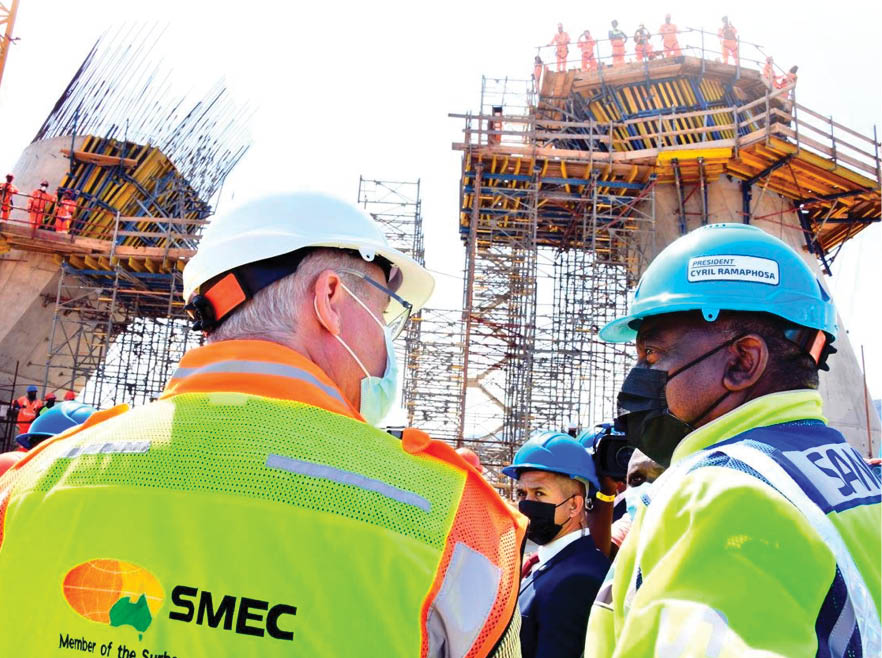Presidential Employment Stimulus set to create jobs
Presidential Employment Stimulus set to create jobs UrsulaOver half a million South Africans have already benefitted from Phase 1 of the Presidential Employment Stimulus (PES). This is evidence that government is committed to creating jobs and ensuring economic growth. Government is now intensifying these efforts with the launch of phase 2. 
The PES was launched by President Cyril Ramaphosa in October 2020, in response to the devasting impact of the Coronavirus Disease (COVID-19) pandemic on employment.
After achieving significant milestones in Phase 1, Phase 2 of the PES was recently launched by Minister in the Presidency Mondli Gungubele, Minister of Employment and Labour Thulas Nxesi and Minister of Public Works and Infrastructure Patricia De Lille.
“The PES is a crucial pillar of the broader economic Reconstruction and Recovery Plan, and supports a portfolio of programmes in three key areas – public employment interventions, livelihood support to sustain self-employment, and protecting existing jobs in vulnerable sectors,” said Minister Gungubele.
What’s new in Phase 2
Phase 2 has already commenced and will be implemented with a budget of R11 billion, allocated by National Treasury.
“It will support the continuation of some programmes from Phase 1, and a range of new ones,” Minister Gungubele confirmed.
Some of the programmes include:
- Recruitment of 287 000 young people as school assistants, which is already underway. Participants will be placed in November 2021;
- Establishment of a new Social Employment Fund, which forms part of the Social and Solidarity Economy Strategy. It will support non-governmental organisations to create 50 000 jobs;
- Support for the Presidential Youth Employment Intervention, to provide support and expand opportunities for unemployed young people – R838 million has been allocated to this programme;
- The National Pathway Management Network (NPMN), also known as SA Youth, which enables youth to register to receive active support to find employment. Youth can access the programme through various platforms, including the zero-rated SA Youth mobi platform;
- Establishment of an Innovation Fund, for partners of the NPMN, working with the Jobs Fund. The fund will identify and support innovative solutions to barriers faced by youth in the labour market;
- Revitalisation of the National Youth Service (NYS), by employing 35 000 youth:
- Support of demand-led training, as a new approach to skills development, that links training to youth and jobs;
- Extension of the Department of Agriculture, Land Reform and Rural Development’s (DALRRD) produce input voucher programme for subsistence farmers;
- A programme to support innovation in public employment in the metros, to be rolled out through the Neighbourhood Development Partnership Programme in National Treasury;
- A new programme that incorporates new models for waste recycling, which are being tested in 25 municipalities;
- Support for graduate employment, by placing 3 000 graduates in universities in work that uses their professional skills;
- A programme with the Department of Communication and Digital Technology to establish a Broadband Access Fund to support connectivity for 50 000 households.
Phase 1 achievements
Eleven national government departments were responsible for implementing various programmes in Phase 1.
Over 550 000 jobs and livelihoods were supported during the first phase, against a target of 694 120 – representing over half a million South Africans who benefited directly, said Minister Gungubele.
“Several programmes are still in implementation and we expect this number to increase,” he added.
Phase 1 achievements include:
- Benefiting 551 000 people, against target of 694 000, of which 85% are youth and 58% are women;
- Total jobs created: 393 713, against a target of 434 000 (91%);
- Livelihoods supported: 117 000, against a target of just under 200 000 (60%);
- Jobs retained: 40 000, against a target of 60 000 (67%);
- The placement of 170 000 youth in various work opportunities through the NPMN;
- The Basic Education Employment Initiative set a target of 300 000 opportunities across 22 000 schools. It exceeded expectations, achieving 320 000 recruitment opportunities. A national minimum wage was also introduced for these youth;
- The DALRRD supported just over 53 000 subsistence farmers with production vouchers;
- The Department of Forestry, Fisheries and Environment employed 35 000 people in existing environment programmes;
- The Department of Social Development’s Early Childhood Development Programme supported over 32 000 practitioners;
- Over 40 000 people were supported in the arts and culture sector.
The PES is set to bring more South Africans into the labour force in greater numbers in a short space of time.